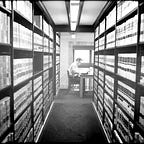Judges in the Classroom — A Civics Education Program
Events of the past year, including the January 6th Capitol riot, have put a spotlight on civics education. Indeed, even prior to 2021, there was deep concern that America is in the midst of a civics education and civic engagement crisis. That is why programs such as the Washington Courts’ Judges in the Classroom program are key to providing Washington State K-12 students with an educational foundation of how the law and government work.
Launched in 1996, Judges in the Classroom pairs judges with teachers in their area to present an interactive lesson that “provide[s] students with a unique opportunity to learn about the legal and judicial systems as well as the basic concept of fairness.” The age-appropriate lesson plans and supporting materials are free for teachers and judges to use and include learning objectives, a lesson agenda, and associated handouts.
A brand new initiative of the Judges in the Classroom program is their Spotlight on Civic Learning in Washington blog. The goal of the blog is to highlight the importance and essential questions of individual program lesson plans. We at the Washington State Law Library are excited to join in collaboration with the Board for Judicial Administration’s Public Trust and Confidence Committee to provide additional content to the blog on civics teaching resources. We share with you here their Freedom of Expression in Special Places post in its entirety. We hope you give the blog a follow and spread the news about Judges in the Classroom! (SC)
Freedom of Expression in Special Places
This blog spotlights and links to lesson plans which judges will deliver in classrooms. This piece focuses specifically on freedom of expression in special places, such as schools, and links to the lesson plan on it.
Consider this:
“ . . . in our system, undifferentiated fear or apprehension of disturbance is not enough to overcome the right to freedom of expression. Any departure from absolute regimentation may cause trouble. Any variation from the majority’s opinion may inspire fear. Any word spoken, in class, in the lunchroom, or on the campus, that deviates from the views of another person may start an argument or cause a disturbance. But our Constitution says we must take this risk, . . . . and our history says that it is this sort of hazardous freedom — this kind of openness — that is the basis of our national strength and of the independence and vigor of Americans who grow up and live in this relatively permissive, often disputatious, society.”
From the opinion by the U.S. Supreme Court in Tinker v. Des Moines Independent School District, 393 U.S. 503 (1969), delivered by Mr. Justice Fortas.
Mary Beth Tinker holding her original detention slip after she wore a black armband to school to protest the Vietnam War (with a replica on her left arm) during a speech at Textor Hall, Ithaca College, 19 September 2017
Where does the right to Freedom of Expression come from?
The lesson on freedom of expression in special places is designed to answer the essential questions below and prompt more exploration. A Washington state judge is available to teach this lesson (and many others — see options: in your classroom, either in-person or remotely).
Essential questions:
What is considered speech in “freedom of speech?”
What are considered “special places?”
How does “special place” status affect First Amendment freedoms?
How do judges decide cases involving freedom of expression in “special places?”
Learn more about the latest on student free speech, including Washington State-specific cases here, and view resources for teaching about the First Amendment and Freedom of Expression here.
This blog post on Freedom of Expression was written to spotlight one or more of the Judges in the Classroom lesson plans, which Judges will deliver remotely or in-person for K-12 classrooms, as part of the judiciary’s goal of promoting civic education.
